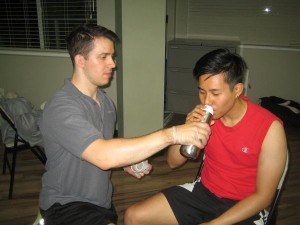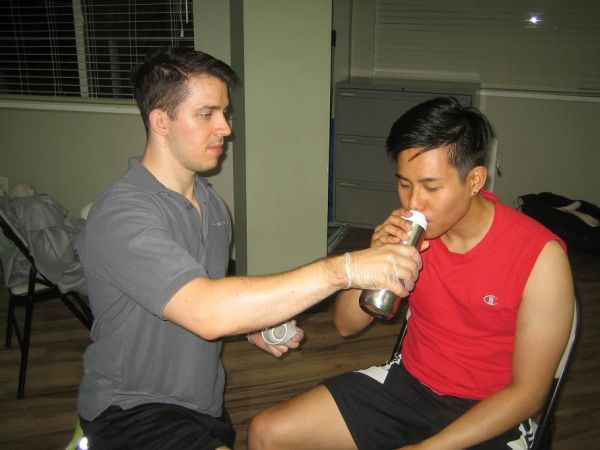Everyone has seen or heard about at least one weather related disaster

including hurricanes, tsunamis, tornadoes and earth quakes. However, weather, specifically extreme heat and cold conditions, can also cause emergency illness and injury in humans.
Extreme Heat Related Injuries
It is important to protect yourself against heat related injuries. These are injuries to your body caused by being dehydrated, exercising and/or being out in the heat for an extended period of time. There are three main types of heat related injuries: Heat Cramps, Heat Exhaustion and Heat Stroke.
Heat Cramps
Just about everyone has experienced a muscle cramp before. A cramp is when a muscle(s) contracts or tightens up due to dehydration and heat. Cramping is the first sign something is wrong. As soon as you experience a cramp, get liquids in your body immediately.
Heat Exhaustion
This is the next phase of a heat related injury. During this phase you begin sweating profusely. Sweating is your body’s natural reaction to being hot. It is your bodies attempt to release internal heat. You can expect your skin to be red, hot and moist.
Heat Stroke
This is the most serious heat related injury. If you have failed to pick up the signs and symptoms of heat cramps and exhaustion, your body may go into heat shock. At this point, your body goes into emergency mode and shuts down systems to conserve energy. One of the systems it shuts down controls your sweat. If you are going through heat stroke, your body stops sweating. Your skin becomes gray or ashen, dry and sticky.
Treatment
In all instances the following protocol should be implemented:
- Remove yourself from the heat source. If you are outside, go inside. If you are unable to go inside, sit under a shady tree or canopy.
- Remove your clothing. Clothes will only make you hotter; removing them allows your body to cool down.
- Slowly drink water. Gulping huge amounts of water will make you nauseous and you could experience vomiting,
- If you experience signs of heat stroke, call 911 right away; this is a life threatening emergency.
Extreme Cold Related Injuries
There are two types of cold related injuries.
Frostbite
Frostbite can occur on any body part but is most commonly seen affecting fingers, toes and noses. You know you are experiencing frostbite if your skin becomes grayish or ashen colored, feels tingly or numb and itches or hurts.
Hypothermia
Hypothermia occurs when your body temperature drops below 35 degrees Celsius (95 degrees Fahrenheit). At this temperature, your body begins to shut down systems like the respiratory and nervous system.
Treatment
Treatment for cold related emergencies are similar to those of heat related injuries and include:
- Remove yourself from the cold. This could include going inside and/or taking off wet clothing that you have on.
- Slowly warm yourself beginning with your extremities. Your hands and feet are furthest away from your heart which pumps warm blood. They are typically the first to be affected.
- Do not rub or shake out your affected areas. This will only damage the skin cells.
- Call 911 if your internal temperature is close to or less than 35C or 95F.
Related topics:

